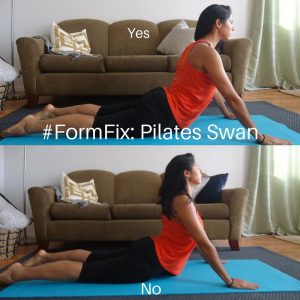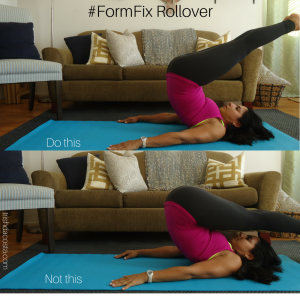Anyone who has spent significant time under a barbell knows a thing or two about low back pain. There are the occasional aches and pains that tend to heal itself on its own, and there are others that become more chronic and disruptive to everyday activities.
My low back pain started “normal” enough – nothing a little foam rolling, rest, and stretching couldn’t fix. But as I progressed in my powerlifting training and neglected my mobility and recovery work, the typical aches and pain turned into more serious, chronic conditions. Before I knew it, sleeping, walking, and even standing felt uncomfortable. I simply couldn’t find a position that gave me any relief!
Lifters and Low Back Pain
For chronic low back pain, researchers recommend exercise and rehabilitation therapy as treatment options. Pills and surgery are more advanced and slightly controversial treatment options that thankfully the medical community is starting to recommend as a last resort.
A well-rounded training program that combines strength training with mobility and other restorative practices is now the new “low back treatment plan” for those who are already active in and out of the weight room. Yoga, Tai Chi, Pilates, and even acupuncture and physical therapy are well-suited for back pain management in lifters and the general population. It comes down to trail and error, finding what suits you best and what you enjoy.
I’ve used Pilates as part of my pain management plan, and it has worked incredibly well over the last two years. While there are other restorative measures to choose from that work just as well, I’ve found Pilates can hit a lot of birds with one stone:
- Mobility
- Diaphramtic Breathing
- Posture
- Joint stability
- Movement through multiple plans of motion
- Muscular imbalances
The practice makes me more in tune with my body and makes my strength training go a lot smoother when I’m consistent with it.
The Top Pilates Exercises for Low Back Pain
While each individual will come to me with their unique weaknesses and strengths, I find a few universal Pilates exercises are helpful for most people suffering from low back pain.
Here are my favorite exercises to stretch, mobolize and strengthen one out of their back pain (please consult with a doctor before doing these, especially if you you’re suffering from a herniated/ruptured/bulging disc).
The Swan

The purpose of the Swan is back extension, which most people do incorrectly because their mid-backs are so stiff and tight that they end up in the lumbar spine instead (see the bottom photo).
Learning to extend the upper thoracic takes time and practice. Most people won’t have the flexibility to lift into the full Swan like I do in this image, and that’s okay. You start small, focusing on release the mid-back in combination with breathe.
- Practice elongating and lengthening the spine as you lift the chest up, rather than finding height
- Keep the head stacked with the spine. Wherever your spine goes, the head follows
- Avoid lifting the chin and gaze up towards the ceiling (see point above)
- Use breath to help “melt” the bones in your mid-back, which is where the back bend or extension comes from. For example, once you get into your maximum ROM, take a big inhale, and on the exhale “melt” the vertebras in the mid-back towards the floor as you lift the sternum up
- Swan is ultimately the Pilates C-curl in reverse. If you do it right, you’ll feel it only in your mid-back
- Keep the feet and legs screwed to the floor. Lifting the legs engages the low back which we are trying to avoid
The Rollover

This exercise is the epitome of yummy, low back massaging goodness, but it’s a tough one to do!
First, it requires a lot of flexibility in the mid-back. Second, it requires that you understand how to lift your legs from the belly instead of with momentum. Beginners are often so wrapped up in the end goal of getting the legs overhead that they never get themselves out of momentum.
There are beginner variations that I use to train newbies (and seasoned practitioners) how to get into a full rollover but for now let’s keep it simple:
- The arms are more important than your legs. See how firmly my arms are pressing through the floor in both images. You should feel your triceps engaged the whole time
- The legs are constantly active, lifting out of the belly and away from the chest, not collapsing into the face like in the bottom picture
- The goal of the exercise is to open up the back and sacrum, not to get the legs to touch the floor. This is where people fail at the Rollover. All they care about is range! That’s actually not important here
- The Rollover is The Hundred upside down. If you can learn to carry the legs into the ribcage or top of the stomach, you’ve already won half the battle! The legs won’t feel as heavy this way
- The roll-down phase is just as critical and tough as the way up. Avoid collapsing back to the start position. Rather, uncurl out of your C-curl to return to the mat
The Side Bend
Anything with lateral flexion is a must in my book because we so rarely move in this direction. The side bend appears much later in the Pilates mat order, which means your back is quite ready for this level of bending.

- The side bend is not an oblique crunch and it’s not a side plank. There is no smashing and there is no straight line
- Instead the ribs and spine create a rainbow shape. You simultaneously reach, lift, and go over into the side bend rather than just bending over to one side
- Imagine the ribs are pulling away from the hip bone on the bend side (see top photo). You truly want to reach the spine up and over to get the full benefit of the stretch
Spine Twist

You wouldn’t think an exercise focused on twisting would be beneficial for chronic low back pain, but in some cases it is (not appropriate if you have the type of back injury where twisting would actually be harmful).
The purpose of this exercise isn’t just rotation, however. It develops strength in the back extensors and trains you to stay upright through the action of rotation. Most of us slump or slouch over, dump our weight into our low back while we sit, and have little to no reason to fully rotate, so the back extensors which includes the ever important multifidius, and obliques never get the full training and development it deserves! These muscles, when weakened or atrophied, can lead to chronic low back pain, so it’s worth adding this exercise into your pain management plan.
- The arms don’t move, they travel with the spine. Until you grasp that concept, do the seated spine twist (see picture above), with hands behind your head
- Your ROM will likely be small to begin with. Don’t force it!
- Avoid using your hips or arms to twist. They shouldn’t move at all in this exercise
- Breathwork will either help or hinder you. Use the exhale to twist and the inhale to return to the start position
I consider these Pilates-based exercises to be beginner friendly enough that any weight lifter can eventually work their way up to with consistent practice. These exercises might feel extremely challenging or difficult at the start, but with enough practice they’ll slowly start to release your back, improve posture, and help mobilize your back so you can stay healthy, well-balanced, and out of pain!


